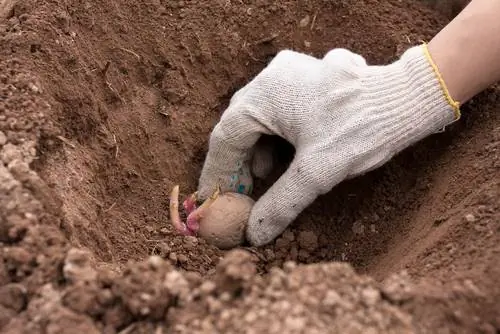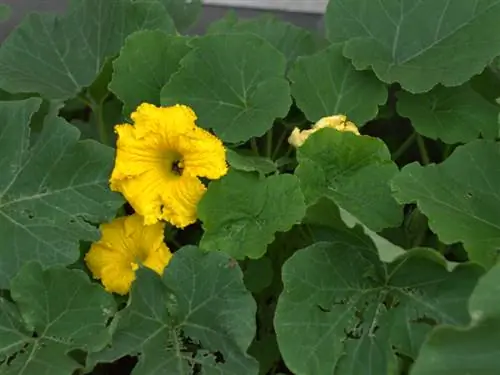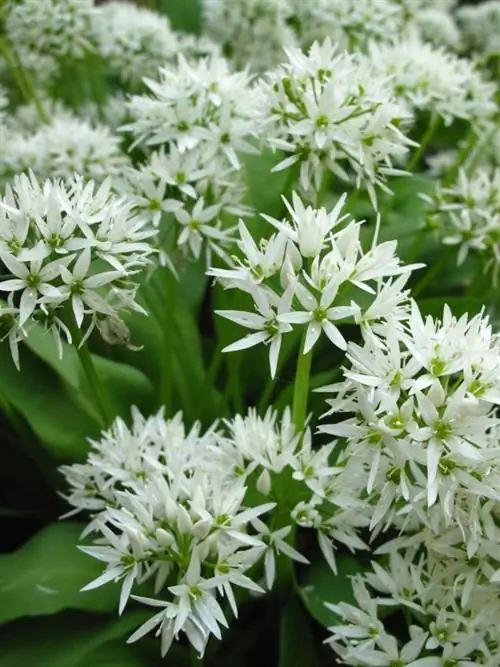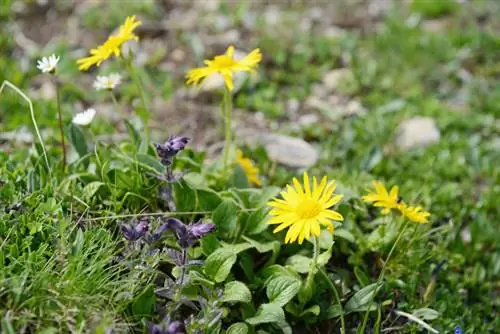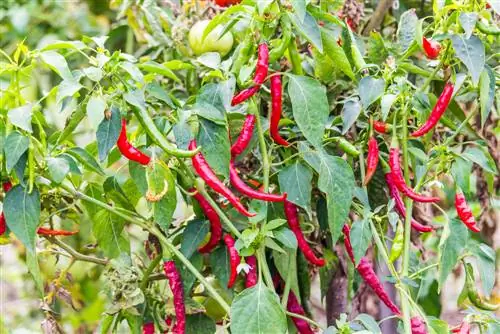- Author admin [email protected].
- Public 2023-12-16 16:46.
- Last modified 2025-01-23 11:21.
Those who start gardening early in the new year will be richly rewarded. For example with new potatoes. After planting potatoes in early spring, the tubers grow and are easy to care for; only the nutrient supply should be ensured. The watering, on the other hand, is usually done by the rain.
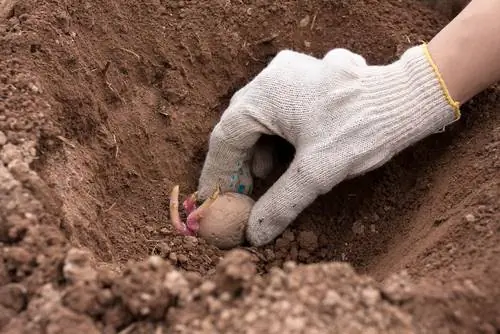
How can you grow early potatoes successfully?
Growing early potatoes is possible with sandy loam soil, humus-rich compost, timely fertilization, pre-germination of seed potatoes, ideal planting distances and depth as well as regular piling and careful harvesting after 70 to 90 days.
Optimal soil
Early potatoes produce a good harvest if the bed is as follows:
- sandy loam soil
- humus-rich
Heavy and wet soils must be improved with compost and, if necessary, sand. A three-year crop rotation applies to potatoes.
Nutrient supply
The potato bed can be supplied with a long-term fertilizer such as horse manure (€12.00 on Amazon) in the fall. In private gardens, however, compost is usually fertilized shortly before planting. This one-time supply of nutrients is completely sufficient, there is no need for additional fertilization.
Seed potatoes
In time for planting, all garden centers, hardware stores and even large supermarkets offer planting material from some early potato varieties. Rare varieties can also be purchased through the boarding school.
Planting time
Early potatoes are planted at the end of March or April, depending on the weather. The weather should be frost-free and the soil temperature should ideally be between 8 and 10 degrees. Planting in May is also possible, but a lot of valuable time is wasted.
Pre-germination
In a bright and warm place, the seed tubers can pre-germinate 4 to 6 weeks before the planting date. This means that the harvest time is reached earlier and a larger harvest is achieved.
Planting spacing and depth
Early potatoes are planted at a distance of 50 x 15 cm or 40 x 20 cm. The tubers are planted in planting holes about 6-10 cm deep.
Care
After the planted tubers have sprouted about 15 to 20 cm, they are piled up. Weeds can be removed on this occasion. Watering is rarely necessary, but there is usually enough precipitation during the growing season.
Harvest
The first tubers can be harvested approximately 70 to 90 days after sowing. This is usually the case in June. The potatoes have a thin skin, which is why they do not store well. To avoid damaging the tubers, they should be removed from the ground with a digging fork.

